Quinoa: A High-Nutrient Pseudo-Grain
Have you heard of quinoa? This high-nutrient pseudo-grain has been gaining popularity in recent years for its impressive health benefits. Not only is it packed with fiber and protein, but it also lowers cholesterol and blood pressure, making it an excellent choice for heart health.
- Quinoa is a complete protein source, meaning it contains all nine essential amino acids.
- It is also high in fiber, which helps promote satiety and support healthy digestion.
- Studies have shown that consuming quinoa can help lower cholesterol levels and reduce blood pressure, thanks to its high content of antioxidants and anti-inflammatory compounds.
Additionally, quinoa is a great option for those looking to manage their weight. Its high protein and fiber content help keep you feeling full and satisfied, which can lead to consuming fewer calories overall. It also contains properties that may help control blood sugar levels and manage diabetes.
- Quinoa has a low glycemic index, which means it is less likely to cause spikes in blood sugar levels.
- It also contains compounds that may improve insulin sensitivity, making it a beneficial food for those with diabetes.
As if that weren’t enough, quinoa supports a healthy gut and digestion. Its high fiber content helps regulate bowel movements and promote the growth of good bacteria in the gut. Plus, it is gluten-free and a great option for those with celiac disease or gluten intolerance.
| 1 cup of cooked quinoa contains: | % Daily Value |
|---|---|
| Protein | 8g |
| Fiber | 5g |
| Fat | 3g |
| Iron | 15% |
| Magnesium | 30% |
| Phosphorus | 28% |
| Potassium | 9% |
| Zinc | 13% |
Quinoa is also a great choice for promoting energy and brain function, improving skin health, and preventing aging. Its high content of vitamins and minerals, including iron and magnesium, help support these functions. Plus, it’s incredibly versatile and easy to incorporate into your meals.
- Use quinoa in place of rice or pasta for a nutrient-dense meal.
- Add it to salads for extra protein and fiber.
- Use quinoa flour for gluten-free baking.
Finally, quinoa is a sustainable crop with minimal environmental impact. It requires less water and fertilizer than other grains and can even grow in poor soil conditions. So, next time you’re looking for a nutritious and eco-friendly option, look no further than quinoa!
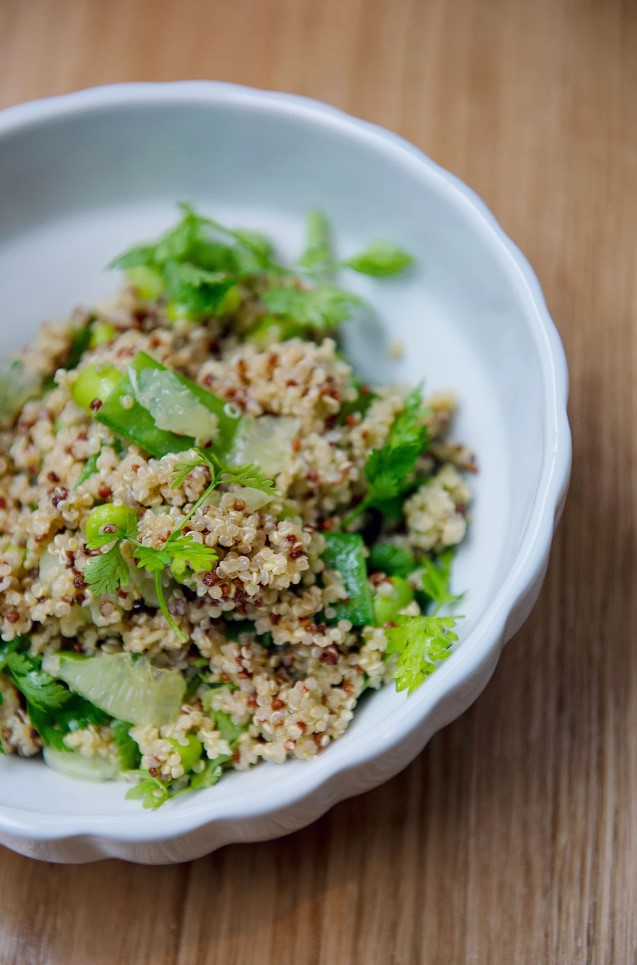
Packed With Fiber And Protein
Are you looking for a food that’s both nutritious and filling? Look no further than quinoa, a high-nutrient pseudo-grain that’s packed with plenty of benefits. But one of the key features that sets quinoa apart from other grains is its high content of both fiber and protein.
With around 8 grams of protein in one cooked cup, quinoa is an excellent source of plant-based protein, making it a great option for vegans, vegetarians or anyone looking to reduce their meat intake. The fiber content further makes quinoa an ideal food for promoting satiety and aiding in weight loss efforts.
- One cup of cooked quinoa contains approximately 5 grams of fiber.
- Fiber is essential for digestive health and helps to regulate blood sugar levels.
- It also promotes a healthy heart by lowering cholesterol and blood pressure.
Fortunately, quinoa is also an extremely versatile food that can be used in a wide range of dishes, from breakfast porridge to salads, stir-fries, and even desserts. So why not incorporate this superfood into your diet and start reaping the many benefits it has to offer?
Lowers Cholesterol And Blood Pressure
High levels of cholesterol and blood pressure can lead to serious health complications. If you’re looking for a natural way to help lower these levels, adding quinoa to your diet could be a good option.
Quinoa is a grain-like seed that is packed with fiber and protein, making it a great addition to any healthy diet. Studies have shown that regular consumption of quinoa can help to lower levels of LDL or “bad” cholesterol, which is a major risk factor for heart disease.
- Quinoa contains soluble fiber, which helps to reduce the absorption of cholesterol into the bloodstream.
- The protein in quinoa has also been shown to have a positive effect on blood pressure, as it can help to relax blood vessels and improve circulation.
In addition to its cholesterol and blood pressure lowering properties, quinoa is also a great source of other important nutrients such as iron, magnesium, and zinc.
| Benefits of quinoa for cholesterol and blood pressure: |
|---|
| Helps to lower levels of LDL or “bad” cholesterol |
| Contains soluble fiber which reduces cholesterol absorption |
| Reduces blood pressure by relaxing blood vessels |
If you’re looking for ways to incorporate quinoa into your diet, there are many delicious and healthy options. Quinoa can be used as a substitute for rice, pasta, or other grains in your favorite recipes. It’s also a great addition to soups, salads, and stir-fries.
Whether you’re looking to improve your heart health or just want to add more nutritious foods to your diet, quinoa is a great choice. With its many health benefits and delicious taste, it’s no wonder that quinoa has become such a popular superfood.
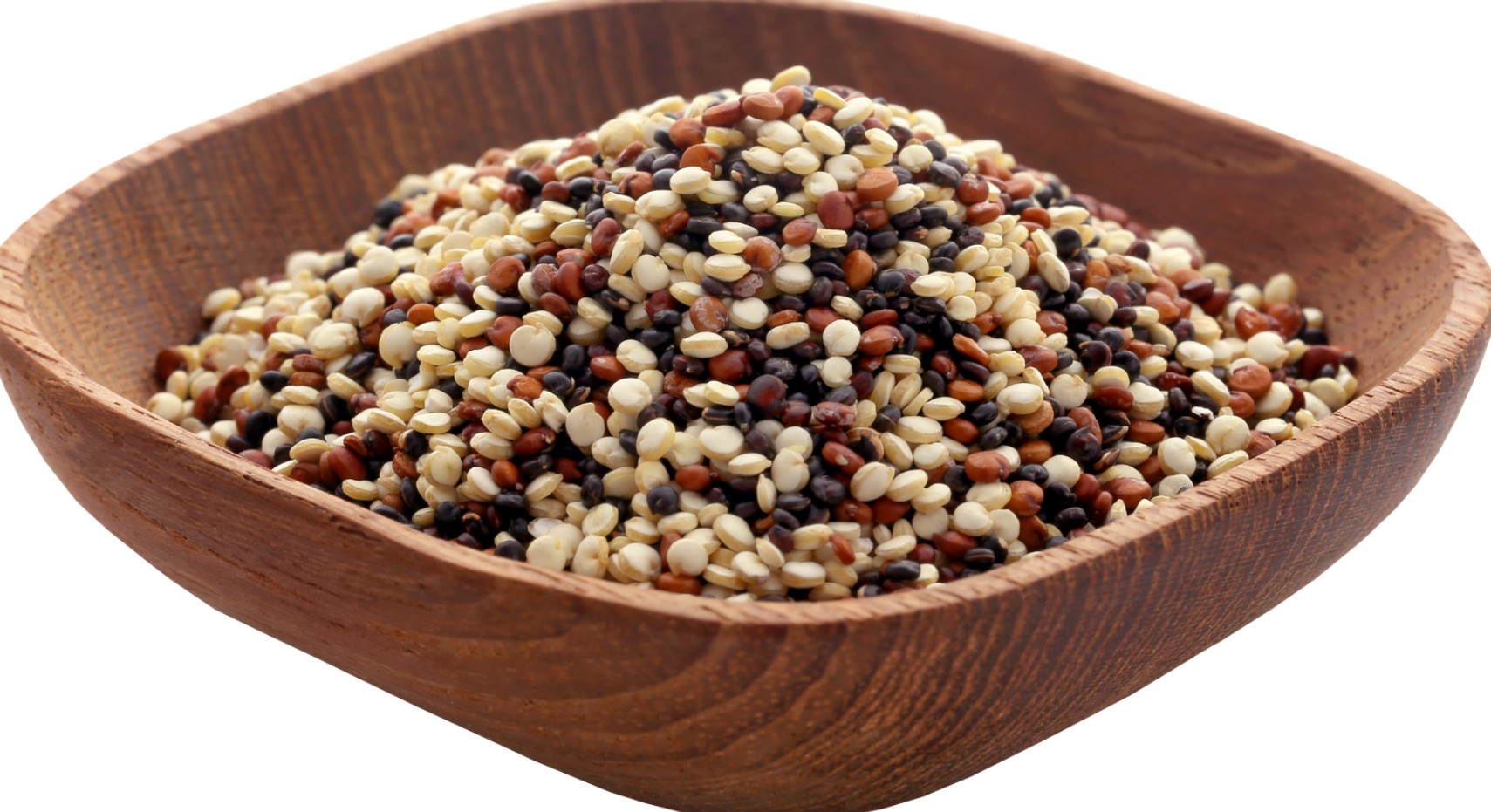
Promotes Weight Loss And Maintenance
When it comes to weight loss, many people turn to fad diets or extreme workouts in hopes of shedding those extra pounds quickly. However, a more sustainable and healthy approach to weight loss is incorporating Quinoa into your meals. Quinoa is a high-nutrient pseudo-grain that is jam-packed with plenty of fiber and protein, making it an excellent food choice for weight loss and weight maintenance alike.
Quinoa is one of the best options for weight loss because it is low in calories and high in fiber. By adding a small serving of quinoa to your meals, you will feel fuller for longer, which can help you control your appetite and reduce your overall food intake. Moreover, quinoa is a complex carbohydrate that can help regulate digestion and blood sugar levels. Therefore, it is an ideal food choice for those looking to achieve and maintain a healthy weight.
- Quinoa is a versatile ingredient that can be incorporated into a variety of meals. Try adding quinoa to your breakfast by adding it to your morning oatmeal or smoothie bowl.
- For lunch, toss some quinoa in a salad with fresh vegetables and a protein source of your choice.
- In the evening, cook up some quinoa as a substitute for rice or pasta in your favorite recipe.
Overall, incorporating Quinoa into your diet can help promote weight loss and weight maintenance. With its high nutrient content, low calorie count, and versatility, quinoa can help you achieve your weight loss goals while keeping you satisfied and energized throughout the day.
Controls Blood Sugar Levels And Diabetes
If you are among the millions of people living with diabetes, controlling your blood sugar levels is crucial. Did you know that consuming quinoa can help you manage your diabetes and keep your blood sugar levels in check?
Quinoa, a high-protein and fiber-rich pseudocereal, is an excellent addition to your diet. It is considered a low glycemic index food, meaning it is slowly digested and absorbed, resulting in a gradual rise in blood sugar levels rather than a sudden spike. This makes it a great carbohydrate source for people with diabetes who need to carefully monitor their blood sugar levels.
Additionally, quinoa is packed with nutrients such as magnesium, potassium, zinc, and folate, which are all beneficial for diabetes management. Magnesium, in particular, plays a crucial role in regulating blood sugar levels and insulin sensitivity.
- For a delicious and diabetes-friendly meal, try quinoa and black bean salad.
- You can also substitute quinoa for rice or pasta in your favorite dishes for a healthier option.
| Benefits of Quinoa for Diabetes Management | |
|---|---|
| Low glycemic index | Slowly digested and absorbed, resulting in a gradual rise in blood sugar levels |
| High in fiber | Helps regulate blood sugar levels and aids in digestion |
| Rich in magnesium | Supports insulin sensitivity and blood sugar control |
| Source of plant-based protein | Helps manage blood sugar and promotes satiety |
Incorporating quinoa into your diet is easy and versatile. You can use it as a base for salads, stir-fries, and even in breakfast bowls. With its numerous benefits for diabetes management, quinoa is a great addition to your diet. Try it out today!
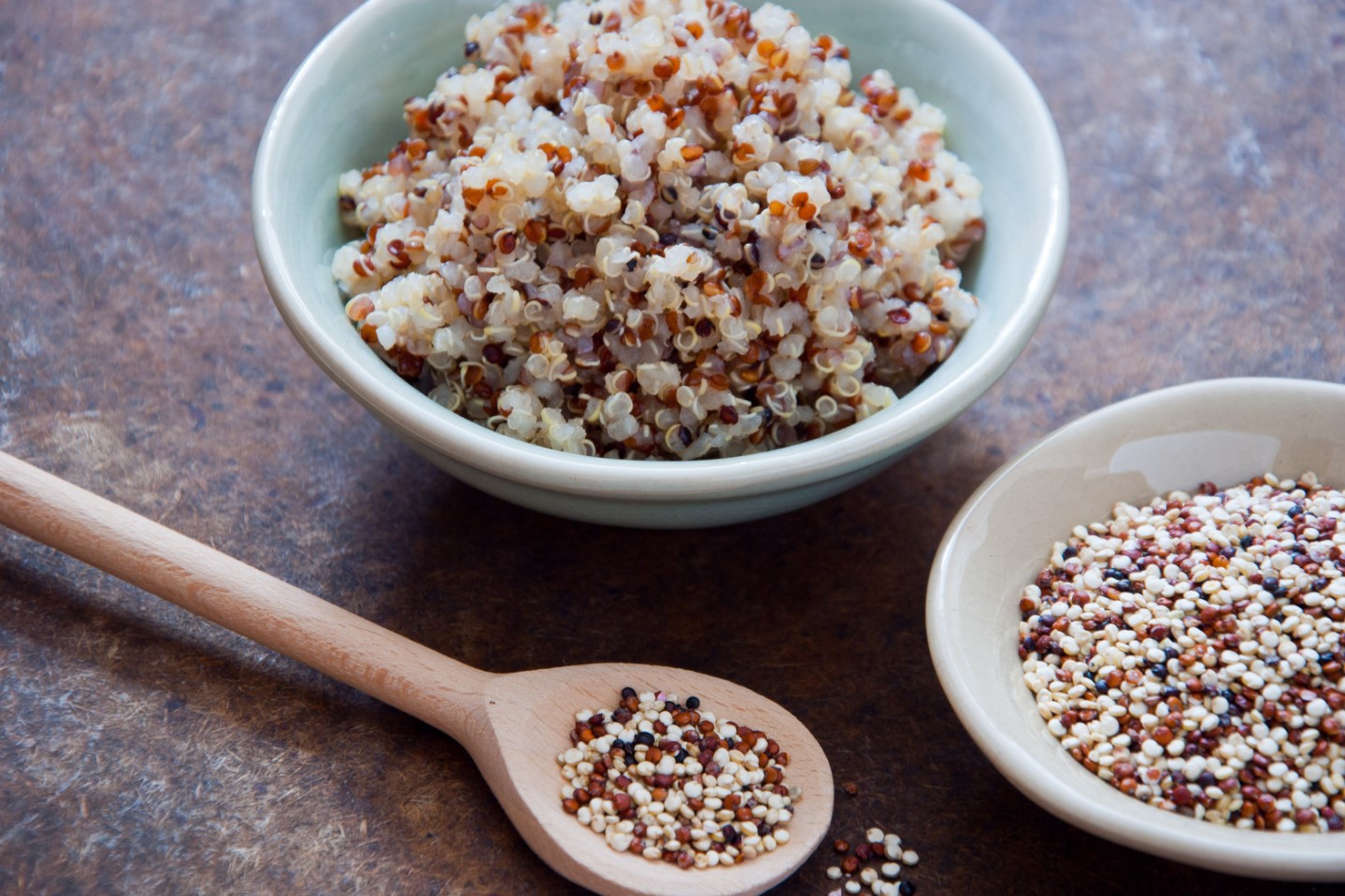
Supports A Healthy Gut And Digestion
Good digestion is essential for maintaining overall health and well-being. However, with our busy lifestyles and unhealthy food habits, it becomes difficult to keep our digestive system in good shape. Thankfully, there are foods that can help promote a healthy gut and digestion, and quinoa is one of them.
Quinoa is a pseudo-grain that’s rich in fiber, protein, vitamins, and minerals. It’s also gluten-free, making it an excellent option for people with celiac disease or gluten sensitivity. The fiber in quinoa helps add bulk to the stool and promotes regular bowel movements, thus preventing constipation and other digestive issues.
Moreover, quinoa contains prebiotics that nourish the good bacteria in the gut, which is important for maintaining a healthy gut flora. Research has also suggested that quinoa may help reduce inflammation in the gut and improve the absorption of nutrients from food.
- Incorporating quinoa into your diet is easy —
- Simply cook it like rice and use it as a base for salads, stir-fries, and bowls.
- You can also use quinoa flour to make pancakes, muffins, and bread.
- Adding quinoa to soups and stews is another great way to incorporate it into your meals.
Overall, quinoa is a versatile and nutritious ingredient that can help support a healthy gut and digestion. By incorporating it into your diet, you can reap its many benefits and improve your overall health and well-being.
Gluten-Free Option For Celiac Disease Patients
Celiac disease is a medical condition that affects the digestive system of individuals who are intolerant to gluten, a protein found in wheat, barley, and rye. Consuming foods that contain gluten can cause severe damage to the lining of the small intestine, leading to various symptoms like bloating, abdominal pain, diarrhea, and nutrient deficiencies. Fortunately, there is a wide range of gluten-free options now available, one of which is the superfood quinoa.
Quinoa is an incredibly versatile and nutritious pseudo-grain that is packed with fiber and protein, making it an ideal substitute for gluten-containing grains like wheat and barley. Quinoa is naturally gluten-free and offers a spectrum of essential nutrients that are vital for maintaining good health and well-being.
- Quinoa is a good source of dietary fiber, which aids in digestion and promotes bowel regularity.
- Quinoa is also rich in plant-based protein, which helps to build and repair muscle tissue, support the immune system, and reduce inflammation throughout the body.
- Quinoa is low in fat and calories and is an excellent choice for people who are trying to lose weight or maintain a healthy weight.
In addition to being gluten-free, quinoa is also an anti-inflammatory food that contains a range of antioxidants, polyphenols, and flavonoids. These compounds help to reduce oxidative stress in the body and protect against the damage caused by free radicals. Quinoa is also a good source of vitamins and minerals like magnesium, potassium, calcium, and iron, all of which are essential for maintaining good health and vitality.
| Gluten-Containing Foods | Gluten-Free Alternatives |
|---|---|
| Wheat bread | Quinoa bread |
| Pasta made with wheat flour | Pasta made with quinoa flour |
| Barley soup | Quinoa soup |
Quinoa is easy to cook and can be incorporated into a variety of meals like salads, soups, stews, and casseroles. Quinoa is also a sustainable crop that requires minimal environmental impact, and it is widely available in many forms.
For celiac disease patients, quinoa is an excellent gluten-free option that provides a host of health benefits. By replacing gluten-containing grains with quinoa, individuals can enjoy a wide range of foods without compromising their health and well-being.
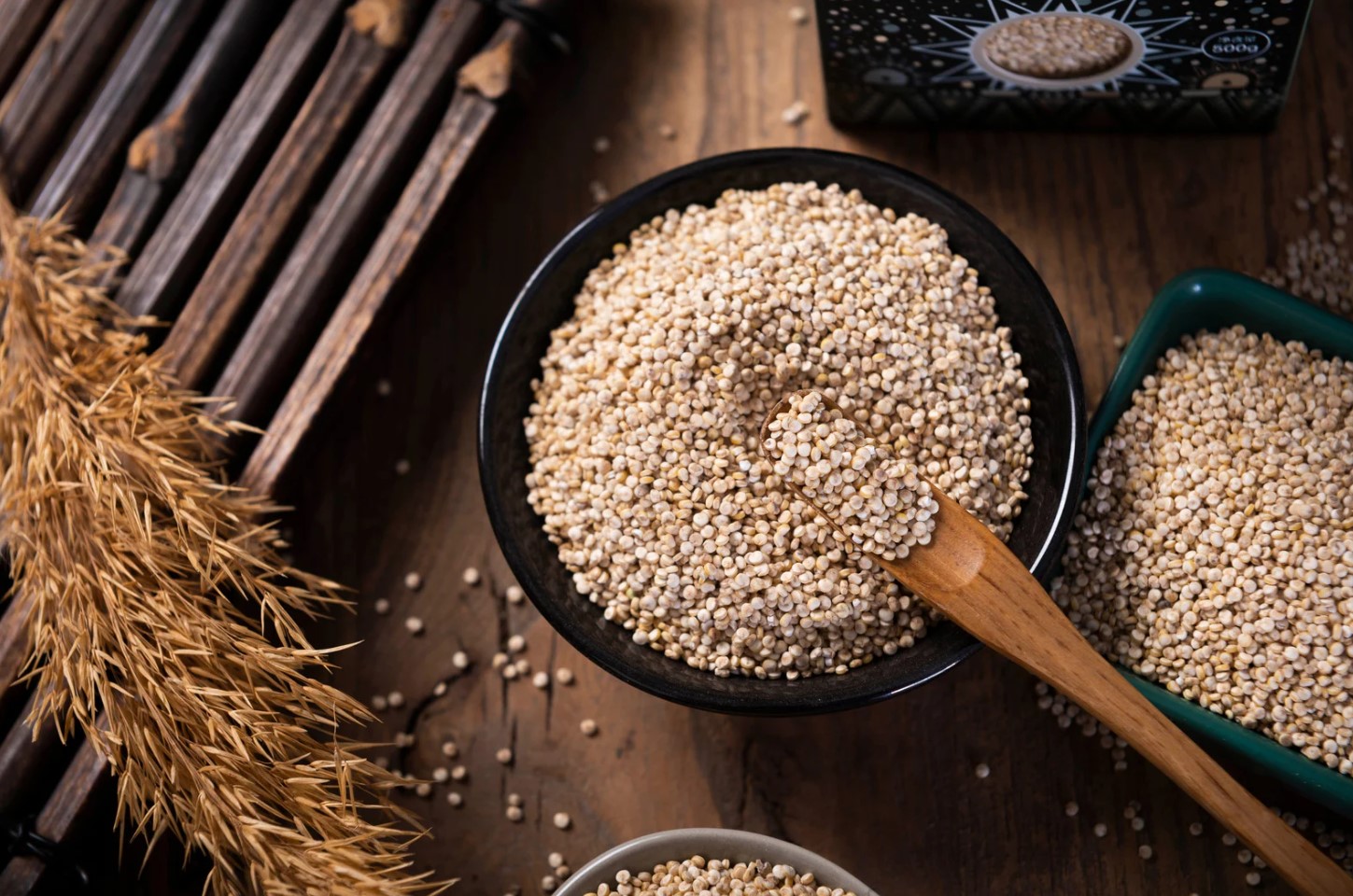
Contains Antioxidants And Anti-Inflammatory Properties
Antioxidants and anti-inflammatory properties are essential for maintaining a healthy diet and lifestyle. Quinoa, a high-nutrient pseudo-grain, is an excellent source of both. It is packed with antioxidants that fight against the harmful effects of free radicals and prevent oxidative stress. Quinoa also contains anti-inflammatory compounds that regulate the body’s inflammatory response, keeping chronic diseases at bay.
Inflammation is a natural response of the body to injury or infection. However, chronic inflammation can lead to a variety of diseases such as arthritis, heart disease, and cancer. Quinoa’s anti-inflammatory properties are attributed to its high levels of flavonoids, saponins, and other phytonutrients. These compounds help to reduce inflammation and protect against chronic diseases.
Moreover, antioxidants in quinoa, such as quercetin and kaempferol, protect the body against oxidative stress, which damages cells and increases the risk of chronic diseases. Quinoa is also a good source of vitamin E, which is an antioxidant that protects the skin from aging and damage.
- Quinoa is a versatile ingredient that can be incorporated into a variety of dishes such as salads, bowls, burgers, and more
- It can be substituted for rice, pasta, or other grains, making it a convenient option for those with celiac disease or gluten sensitivity
- Quinoa is also easy to cook and takes less time than most grains
In conclusion, quinoa is not only a delicious and nutritious grain, but it is also an excellent source of antioxidants and anti-inflammatory compounds. Incorporating quinoa into your diet can help promote longevity, protect against chronic diseases, and improve overall health and wellbeing.
Boosts Energy And Brain Function
Quinoa is a nutrition powerhouse that offers numerous health benefits, including one that many people are not aware of – it can boost your energy and brain function. This pseudo-grain, which is actually a seed, is a complete protein and contains all nine essential amino acids.
Quinoa is also high in magnesium, a mineral that plays a crucial role in converting food into energy. Magnesium deficiency can result in fatigue, weakness, and decreased energy levels. Including quinoa in your diet can help you meet your daily magnesium requirements, which in turn can keep you energized and focused throughout the day.
Moreover, quinoa contains complex carbohydrates that provide sustained energy to your body without causing blood sugar spikes and crashes. The low glycemic index of quinoa means that it is slowly digested and absorbed, keeping your blood sugar levels stable and preventing sudden drops in energy.
- Quinoa can be eaten as a breakfast porridge, mixed with fruits, nuts, and honey.
- It can also be used to make energy-boosting snacks like quinoa energy bars or granola.
- If you are feeling low on energy during the day, try snacking on some quinoa and avocado salad or quinoa and vegetable stir-fry.
Additionally, the nutrients in quinoa can improve brain function, including memory, concentration, and overall cognitive performance. This is because quinoa is rich in iron, a mineral that carries oxygen to the brain and helps produce neurotransmitters. Iron deficiency can cause brain fog, poor memory, and impaired cognitive function.
Quinoa is also a good source of B vitamins, especially thiamine and riboflavin, which are important for brain health. Studies have shown that B vitamins play a role in improving memory, mood, and reducing the risk of age-related cognitive decline.
| Nutrients in Quinoa That Boost Brain Function | Functions in the Body |
|---|---|
| Iron | Transports oxygen to the brain, helps produce neurotransmitters |
| Thiamine (B1) | Converts food into energy, supports nerve function, helps produce neurotransmitters |
| Riboflavin (B2) | Converts food into energy, supports nerve function, helps produce neurotransmitters, protects against oxidative stress |
Therefore, adding quinoa to your diet can not only increase your energy levels but also boost your cognitive function. So, head to your nearest grocery store and make sure to include this nutrient-packed seed in your meals!
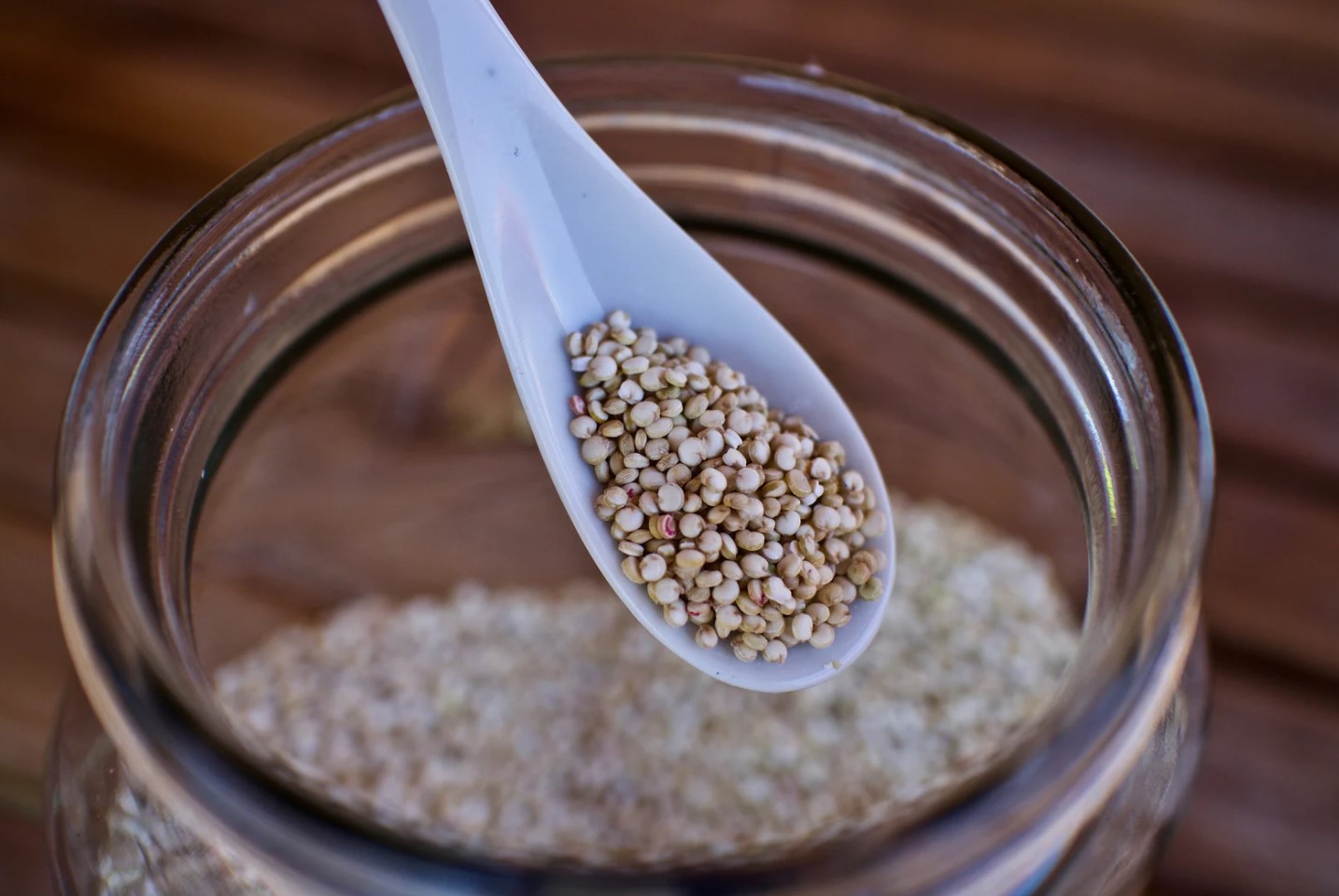
Improves Skin Health And Prevents Aging
As we age, we all want to maintain that youthful glow and keep our skin looking healthy and radiant. Fortunately, there are many ways to achieve this naturally, and one of the easiest and most effective ways is by incorporating quinoa into your diet.
Quinoa is rich in antioxidants, which help to protect the skin from damage caused by free radicals. Free radicals are unstable molecules that can damage cells and contribute to aging. By neutralizing these molecules, antioxidants help to keep the skin looking youthful and healthy.
- Quinoa is also a good source of protein, which is essential for maintaining healthy skin. Protein helps to build and repair tissue, including the skin. Without enough protein, the skin can become dry, flaky, and less elastic.
- Additionally, quinoa is packed with vitamins and minerals that are essential for healthy skin, including vitamin E, zinc, and selenium. These nutrients help to keep the skin moisturized, reduce inflammation, and promote collagen production.
- Furthermore, quinoa is a gluten-free option that is suitable for those with celiac disease or gluten sensitivities. Unlike other grains, which can be inflammatory for some people, quinoa is gentle on the digestive system and can even help to promote a healthy gut.
Incorporating quinoa into your diet is easy and convenient. It can be used in a variety of dishes, from salads and soups to stir-fries and casseroles. Quinoa can also be substituted for rice, pasta, or other grains, making it a versatile ingredient in many recipes.
Overall, quinoa is a sustainable crop with minimal environmental impact that offers numerous health benefits, including improved skin health and anti-aging properties. So why not add some quinoa to your next meal and see the difference it can make for your skin?
Easy To Cook And Incorporate İnto Your Meals
Quinoa, a high-nutrient pseudo-grain, has become increasingly popular in recent years for its numerous health benefits. Not only is it a good source of fiber and protein, but it also helps lower cholesterol and blood pressure, making it a great addition to a heart-healthy diet. Plus, it promotes weight loss and maintenance, controls blood sugar levels and diabetes, and supports a healthy gut and digestion.
But one of the biggest advantages of quinoa is how easy it is to incorporate into your meals. Unlike other whole grains that may take longer to cook or require specific preparation methods, quinoa can be cooked in under 20 minutes and used in a variety of dishes.
- Try making a quinoa salad with your favorite vegetables and a tangy vinaigrette dressing.
- Add cooked quinoa to soups, stews, or chili for extra texture and nutrition.
- Use quinoa instead of rice or pasta in stir-fries or casseroles.
Not only is quinoa versatile, but it’s also available in many forms for convenience and accessibility. You can find pre-cooked quinoa in the frozen aisle or ready-to-eat quinoa cups at your local grocery store. Plus, quinoa flour and flakes can be used in baking or as a gluten-free alternative to traditional grains.
Overall, quinoa is a great addition to anyone’s diet. Its health benefits, versatility, and ease of use make it a favorite among health-conscious individuals and busy home cooks.
Versatile Ingredient İn Various Recipes
Quinoa has been gaining popularity as a healthy alternative to rice, pasta, and other grains. Its versatility in various recipes is one of the reasons why many people have been incorporating it into their meals. This South American pseudo-grain is packed with protein and fiber, making it a great addition to a vegetarian or vegan diet.
One way to use quinoa is in salads. Quinoa can be added to leafy greens or mixed with chopped vegetables for a colorful and nutritious meal. It can also be used as a substitute for rice in stir-fries, or as a base for grain bowls. Another recipe idea is to make stuffed peppers or mushrooms, using quinoa as a filling.
- Quinoa salad with roasted vegetables
- Quinoa stir-fry with tofu and vegetables
- Quinoa stuffed peppers or mushrooms
Quinoa can also be used in baking, as an alternative to flour or oats. Quinoa flour can be used to make gluten-free bread, muffins, or pancakes. Quinoa flakes can be used in granola bars or as a topping for yogurt. Quinoa can also be used as a binder in veggie burgers or meatballs, as an alternative to breadcrumbs.
| Recipe | Ingredients |
|---|---|
| Quinoa flour bread | Quinoa flour, baking powder, salt, water, olive oil, honey or maple syrup |
| Quinoa veggie burgers | Quinoa, black beans, onion, garlic, chili powder, cumin, egg, breadcrumbs, salt and pepper |
Quinoa is a versatile ingredient that can be used in various recipes, from salads to baked goods. It is also a highly nutritious grain that supports gut health, lowers cholesterol, and controls blood sugar levels. With its protein and fiber content, quinoa is a great addition to any diet, especially for vegetarians and vegans. And with its minimal environmental impact, quinoa is a sustainable crop that we can all support.
Sustainable Crop With Minimal Environmental Impact
Sustainable Crop With Minimal Environmental Impact
With concerns over climate change and sustainability, it is important to consider the environmental impact of the foods we consume. One crop that stands out as environmentally friendly is quinoa. This nutrient-packed pseudo-grain has minimal impact on the environment compared to traditional crops like wheat and corn.
Quinoa is a low-water crop that can thrive in a variety of climates, including harsh and dry conditions. It doesn’t require large amounts of fertilizer and pesticides, which can prevent soil degradation and water pollution. In addition, quinoa is a crop that can be sustainably harvested year after year without depleting the soil’s nutrients or damaging the ecosystem.
| Environmental Impact | Quinoa | Traditional Crops |
|---|---|---|
| Water Usage | Low | High |
| Fertilizer and Pesticide Use | Minimal | High |
| Soil Health | Sustainable | Degradation |
| Ecosystem Impact | Minimal | High |
Overall, choosing quinoa as a food source is a sustainable choice that can benefit both our health and the environment. By incorporating more quinoa into our diets, we can help reduce the environmental impact of food production and support sustainable farming practices.
Can Substituted For Rice, Pasta, Or Other Grains
When it comes to meal planning, it’s always great to have versatile ingredients that can be used in various ways. One such ingredient that has gained a lot of popularity in recent years is quinoa. Not only is quinoa packed with essential nutrients, but it can also be easily substituted for rice, pasta, or other grains.
Quinoa is a pseudo-grain that is commonly referred to as a superfood. It is a complete protein, meaning that it contains all nine essential amino acids. This makes it an excellent choice for vegetarians and vegans who may struggle to get enough protein in their diet. In addition to protein, quinoa is also high in fiber, which helps to regulate digestion and prevent constipation.
One of the best things about quinoa is that it is incredibly versatile. It can be used in a variety of dishes, from salads to stir-fries to soups. It can be used as a base for a grain bowl, or even as a substitute for rice in sushi. Because it has a mild, nutty flavor, quinoa pairs well with a wide range of spices and flavors.
- Substitute for rice: Quinoa can be used in place of rice in dishes like stir-fries, fried rice, and pilafs. It has a similar texture to rice, but with a slightly nuttier flavor.
- Substitute for pasta: Quinoa can also be used as a substitute for pasta in dishes like mac and cheese and spaghetti carbonara. It has a similar texture to pasta, but is higher in protein and fiber.
- Substitute for other grains: Quinoa can be used in place of other grains like couscous and bulgur in dishes like tabbouleh and grain bowls.
Quinoa is not only a healthy and versatile ingredient, but it is also easy to cook. To cook quinoa, simply rinse it well and add it to a pot with water or stock. Bring to a boil, then reduce the heat and simmer for about 15 minutes, or until the quinoa is tender and the liquid has been absorbed.
Overall, quinoa is a fantastic ingredient to have on hand for meal prep and cooking. Whether you are looking to boost your protein intake or simply want to try something new, quinoa is a great choice.
Available İn Many Forms For Convenience And Accessibility.
Quinoa is a grain that has become increasingly popular in recent years due to its nutritional benefits. Not only is it packed with fiber and protein, but it also supports a healthy gut and digestion, boosts energy and brain function, and even improves skin health and prevents aging. So, what makes quinoa stand out from other grains? One factor is its versatility – it can be found in many forms for convenience and accessibility.
One of the most common forms of quinoa is the traditional grain. This can be found in most grocery stores in the bulk foods section. It can also be pre-packaged and labeled as white, red, or black quinoa. This type of quinoa is great for salads, soups, and stews.
Quinoa flour is another popular form of the grain. This can be found in health food stores or online. It can be used in baking for gluten-free options, and is often mixed with other gluten-free flours for better results.
- Quinoa flakes are another option. These can be found in many health food stores and can be used like oatmeal for a hearty breakfast, or as a topping for yogurt or smoothie bowls.
- Quinoa pasta is also a great alternative for those with gluten intolerances. It can be found in most grocery stores and is a healthier option than traditional pasta.
Overall, quinoa is a versatile ingredient that can be incorporated into any meal in a variety of forms. It is a sustainable crop with minimal environmental impact, making it a great option for those who want to eat healthy and be environmentally conscious. So next time you’re at the grocery store, consider adding quinoa to your cart – it’s available in many forms for convenience and accessibility.